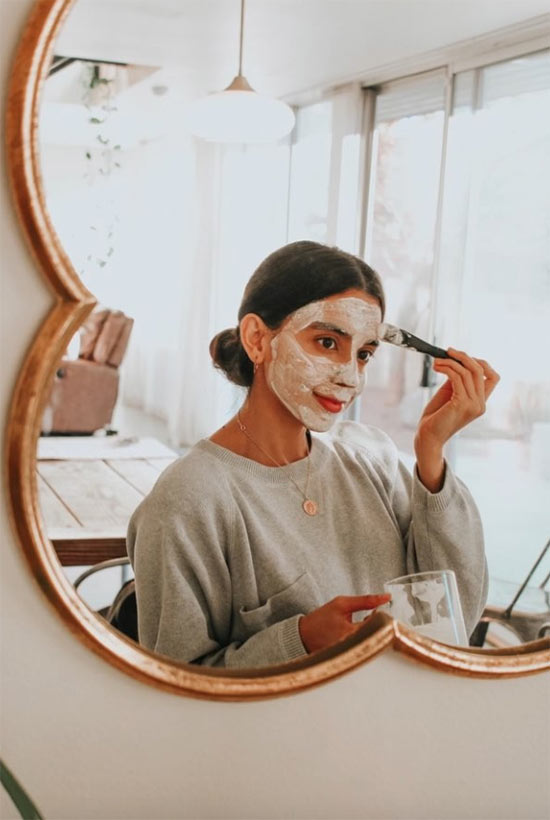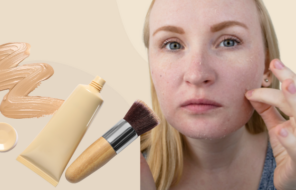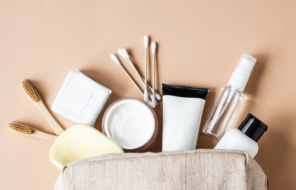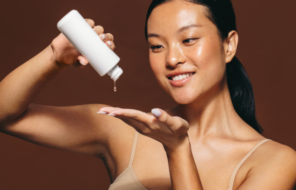A case could easily be made that kaolin clay is the best clay for the skin. It has all of the deep-cleansing and oil-absorbing effects of other clays, but it is significantly milder and more soothing to the skin.
In this article, we explain exactly what kaolin clay is and why it is so common in skin care. We go over its benefits, as well as which skin types will benefit from it the most and how. As always, we also warn about some potential issues and side effects that come with this fabulous ingredient. To make sure you can avoid those pitfalls and make the most out of your kaolin clay products, we’ve added a handy how-to guide, as well as some useful tips & tricks.
In this article:
- What Is Kaolin Clay?
- Kaolin Clay Benefits for Skin
- What Skin Types Is Kaolin Clay Best for?
- Are There Any Side Effects to Using Kaolin Clay for Skin?
- How to Use Kaolin Clay for Skin?
- Kaolin Clay Tips & Tricks
What Is Kaolin Clay?
Kaolin clay is a naturally occurring mineral ingredient. It goes by many other names, including kaolinite, white clay, china clay, or hydrated aluminum silicate (although this name can apply to other minerals as well). This clay is extremely common and is mined all over the world. It has been used in ceramics for centuries and these days is also used by the paper industry to make whiter, smoother looking sheets.
On its own, it comes as a soft, silky white powder, and can occasionally be mixed with other kinds of clays or minerals and then marketed as “green clay” or “pink clay.” Kaolin clay is extremely popular in skin care because it is gentle and easy to formulate. It is extremely absorbent and is able to soak up or be mixed with both oil and water.
Kaolin Clay Benefits for Skin
There are many reasons you might want to consider adding a kaolin clay mask to your skin routine, and all of them are discussed below!
Oil-Absorbing
Kaolin clay is highly absorbent. It will soak up as much oil as you let it, so the oilier your skin, the more clay you may want in your skin care products. This is fantastic if your skin tends to get very oily and can come in handy to mattify the skin as part of your skin care routine before special events.
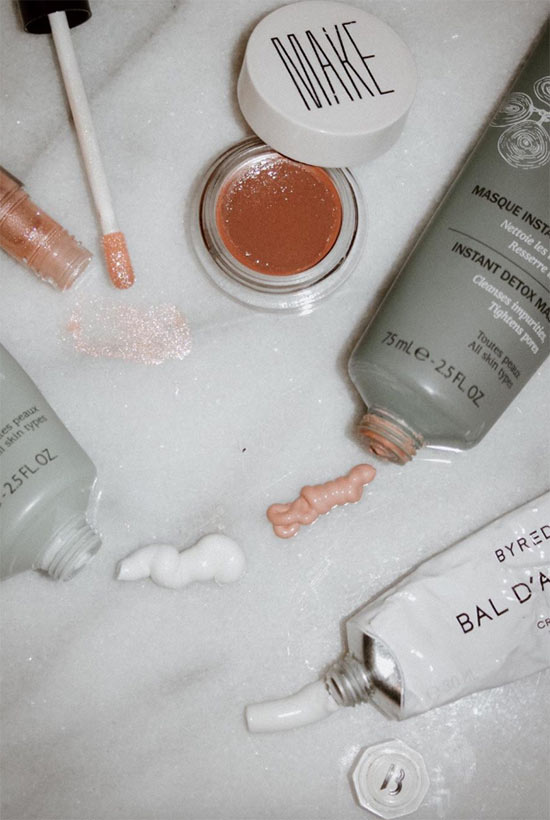
Deep Cleaning
Kaolin clay doesn’t just absorb oil, it also absorbs water and water-based impurities. This means that it can pull all kinds of gunk from the skin, and help to decongest pores.
Clay-based masks, in particular, are great because they can stay on the skin for longer than a typical cleanser, which is why they can give such a thorough cleaning. People who suffer from blackheads or sebaceous filaments will benefit from kaolin clay products the most because of this ability.
Mild
Kaolin clay is the mildest of the skin care clays. It is much gentler than bentonite clay or mud, but it is still fairly absorbent. The reason it is so gentle is its pH.
As you will know if you’ve read some of my cleanser guides, the skin thrives when its pH remains below 5.5, while at higher pHs it can get easily compromised and irritated. Kaolin clay, once solved in water, has a pH of 5, which is great for the skin. Other clays, like bentonite and illite, have much higher pHs that are likelier to irritate the skin.
As a Delivery Base for Other Things
The final benefit of kaolin clay is that it’s a wonderful delivery system. A mask with kaolin clay will contain all types of other beneficial ingredients, and the clay is great for delivering them into the skin. These ingredients could be acne fighters like salicylic acid or sulfur, moisturizing oils, or anti-inflammatory extracts. This is why it is important to choose a kaolin clay mask that will suit your skin’s particular needs.
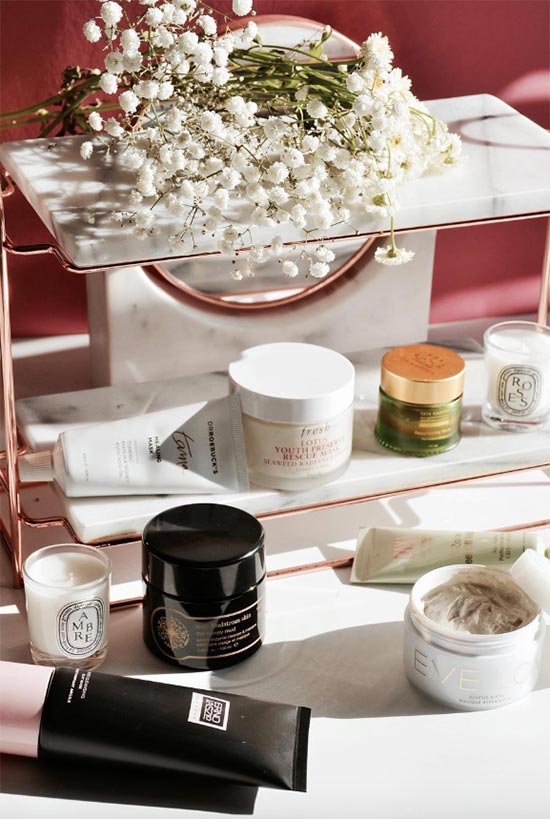
Exfoliation
Your kaolin clay mask is not going to replace your favorite acid-based toner, but it will still remove some dead skin and end up leaving your skin feeling softer than it was before you applied it. This is because the clay powder does not fully dissolve in water, and it has an extremely gentle abrasive effect especially when it’s massaged or removed from the skin.
What Skin Types Is Kaolin Clay Best for?
Almost every skin type can benefit from kaolin clay, but how do you use it based on your particular skin type and needs?
Kaolin Clay for Oily Skin
Kaolin clay, like other skin care clays, is very quick to absorb sebum from the skin. Because of this, it is definitely ideal for combination and oily skin types.
While our skin absolutely needs some sebum to function properly, overproduction of sebum gives the skin a greasy cast and contributes to an increase in clogged pores and breakouts. Kaolin clay skin care products help to take away some of that oil, and in doing so they help prevent some of its adverse effects.
Kaolin Clay for Dry and Normal Skin
If you have dry or normal skin but also suffer from clogged pores, you might be able to benefit from a kaolin clay mask as well. The natural drying effects of kaolin clay can be mitigated when it’s formulated with water, oils, and humectants.
These moisturizing ingredients can replenish what kaolin would otherwise take away from the skin, but they don’t stop it from drawing out impurities and unclogging pores. The key, if your skin is a little dry, is to moisturize very well after using a product that contains larger amounts of kaolin clay.

Kaolin Clay for Sensitive Skin
If you have sensitive skin or are experiencing a lot of inflammation due to acne, you will find that a kaolin clay-based mask can be wonderful! As I mentioned earlier, kaolin clay is the mildest of the clays that show up in skin care, so it is also the best for easily inflamed or aggravated skin.
Look for kaolin clay skin care products that are free of excessive fragrance or essential oils. Instead, look for a kaolin mask that also contains skin soothers like calendula or centella asiatica extract, so it can simultaneously soothe and deep clean your skin.
Are There Any Side Effects to Using Kaolin Clay for Skin?
Sometimes, the intended purpose of a product is also its main side effect. With kaolin clay, the goal is to have it remove excess oil from the skin and to leave it cleaner and more matte.
However, if used too frequently, if the kaolin clay mask is too harsh, or if the skin is not moisturized adequately afterwards, you can end up with dry, dehydrated, and irritated skin. Because kaolin clay can absorb both oil and water, improper or extreme use of it can even damage oily skin.
Additionally, it is important to remember that kaolin clay is often combined with potentially irritating fragrances or essential oils. This is especially true when it comes to tingling masks, which usually contain menthol. While most people will tolerate these fragrance ingredients, including menthol, for those with easily irritated skin it can lead to an adverse reaction. This is why patch testing new products is always recommended.
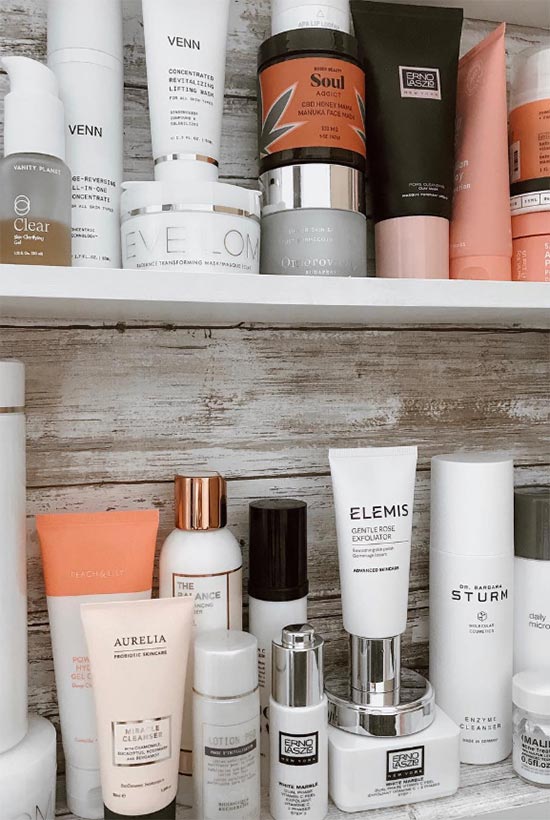
Once we set aside the risks that come with poor formulations and improper use, kaolin clay is actually very safe for the skin. Because it is a mineral ingredient rather than a bioactive one, it is extremely unlikely to cause allergic reactions or contact dermatitis. When people do have negative reactions to a product with kaolin clay, the clay itself is rarely the culprit.
One final note – some people make it a habit to consume kaolin clay, believing it to have certain health properties. We definitely recommend speaking to a doctor before taking on such a practice.
How to Use Kaolin Clay for Skin?
Kaolin clay is best used in skin care as a mask, a few times a week, although it may also show up in cleansers and face scrubs. Unless directed otherwise by the product instructions, this is the best way to use kaolin clay skin care products:
- Cleanse
Begin by cleansing your skin thoroughly, especially if you’re masking at the end of the day. Oil cleansing, in particular, is a great way to prepare the skin for an absorbent kaolin clay mask.
- Exfoliate
If you normally do so, exfoliate your skin to remove excess dead skin cells. You can do so by wiping on a chemical exfoliant like salicylic or glycolic acid and wait 10-15 minutes for it to penetrate into the skin. This will be particularly useful if you want to decongest the pores. Alternatively, you can use a gentle facial scrub, or you can skip this step altogether.
- Apply the Mask
To apply your kaolin clay-based mask you can use your fingers, and simply smooth it on in upward motions. If you’d rather not get your hands dirty, use a clean mask brush instead. Use it to paint the mask on your skin in upward, overlapping strokes. In all instances, work your way from the bottom up in order to brush up your little facial hairs and to get as close to the skin as possible. Keep the mask away from the area around your eyes.
- Wait for Some Time
Allow the mask to sit on your skin for 5-15 minutes. A typical sign that it’s time for a mask to be removed is when parts of it begin to dry up and crack. If the mask becomes dry all over your face, it’s a sign you’ve left it on for too long, and it may dry out your skin.
- Remove It
To remove the kaolin clay mask, first, splash your face with lukewarm water, and then lightly massage to break it down. Then rinse off as much of it as you can using just water. Next, to get rid of what remains of the kaolin clay mask (and some will definitely remain, clay masks are notoriously hard to remove), use a damp face cloth or cotton pad to gently wipe your face. You may have to repeat this a few times until the mask fully breaks down and comes off.
- Use a Hydrating Mask
Now it’s time to load the skin up with some of the moisture it may have lost while you masked! You can apply a moisturizing wash-off mask or a sheet mask if you like.
- Apply Skincare
A longer, Asian beauty-style routine is the best way to prevent potential dehydration. Start by applying a hydrating essence or toner, and then load your skin up with nourishing, hydrating products like serums, skin ampoules, and lotions. If necessary, apply an anti-acne spot treatment.
- Moisturize
Finish things off with a healthy layer of moisturizer as well as sunscreen if you gave yourself this treatment in the morning.
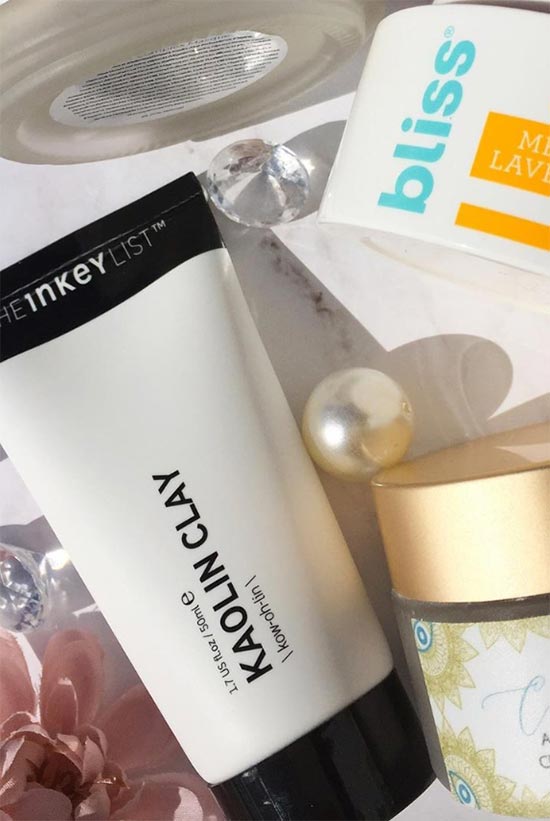
Kaolin Clay Tips & Tricks
- Many kaolin clay masks can also double as an acne spot treatment, especially if they contain acne-fighting ingredients like tea tree oil, sulfur, or salicylic acid, and as long as they are free of potentially irritating foaming agents. Simply dab a little bit of your mask over a pimple, and you can expect that by morning it’ll be reduced in size or at least a little less irritated.
- If your skin is on the sensitive or dry side, you can buffer your kaolin clay mask by applying a very thin layer of a dryer oil like grape seed oil to your skin. It will prevent the kaolin clay mask from drying out your skin too much, but it won’t impede its deep cleansing abilities.
- Those with combination skin can benefit from double masking. This means using a kaolin clay mask over the oily parts of their skin, which are usually within the T-zone and using a more nourishing mask over the cheeks, jawline, and around the eyes where the skin tends to be drier.
- Flash masking can be great if your skin is a little sensitive or if you are in a serious rush but need a quick, deep cleanse. Apply your kaolin clay mask to your skin for just a few minutes, and then rinse it off. You will still get some of the purifying and invigorating benefits, but with less irritation. Alternatively, you can choose a cleanser with kaolin clay, which can be rinsed off easily.
- In-shower masking is a trick that will help your kaolin clay mask do a better job of drawing impurities from the skin, but will also help hydrate your skin. With so much water in the air, your mask will stay moist instead of drying down, and it will help infuse your skin with hydration. At the same time, the slight heat will help dilate your pores and will allow the kaolin clay to pull impurities from much deeper within the skin.
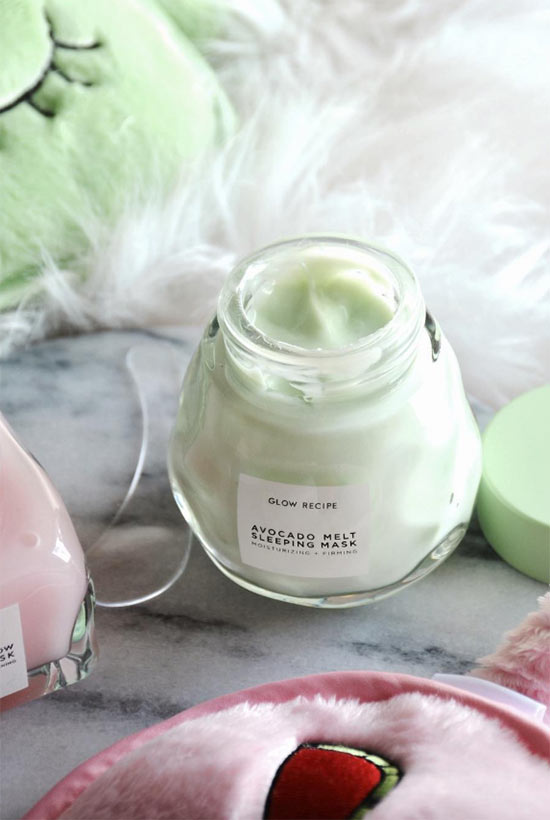
Photos via @mimundorebelde, Instagram

